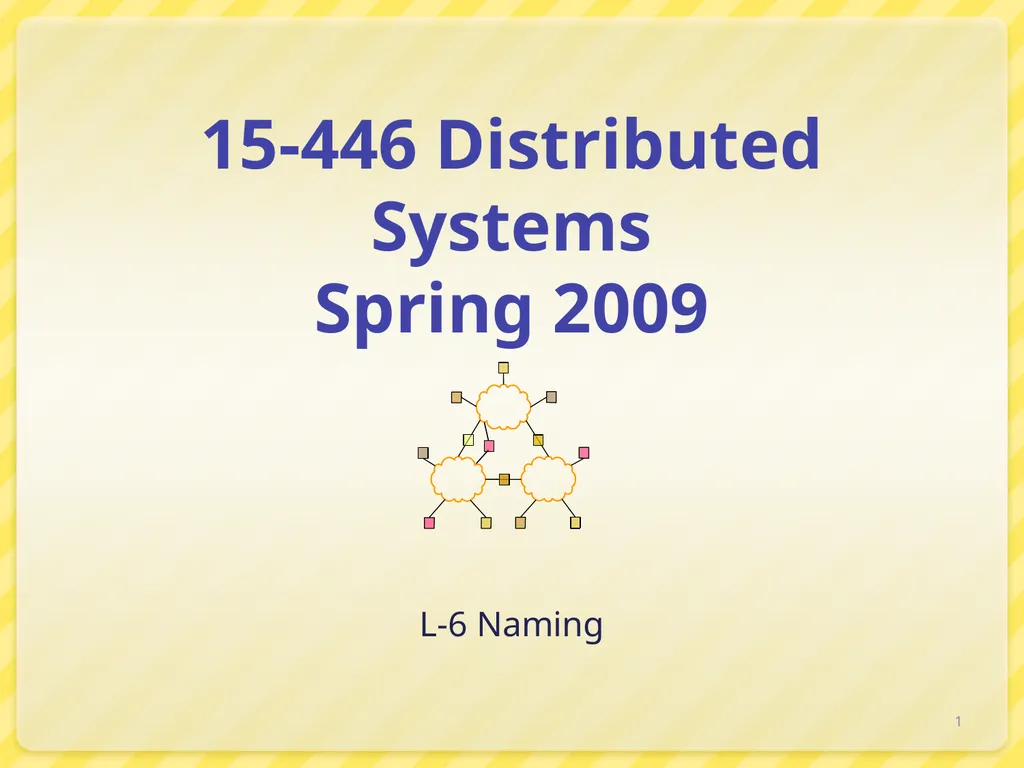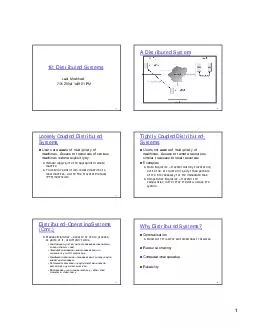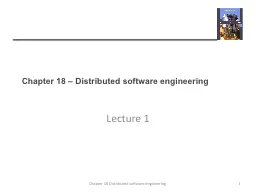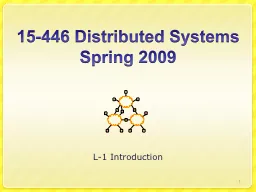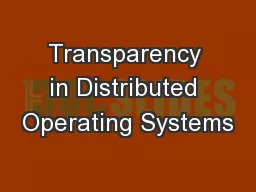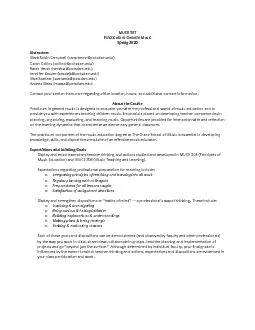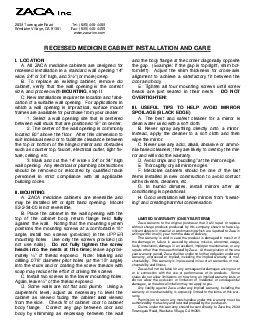15-446 Distributed Systems Spring 2009 L-6 Naming
Author : debby-jeon | Published Date : 2025-06-27
Description: 15446 Distributed Systems Spring 2009 L6 Naming 1 Todays Lecture Naming overview DNS Service location Server selection 2 Names Names are associated with objects Enables passing of references to objects Indirection Deferring decision on
Presentation Embed Code
Download Presentation
Download
Presentation The PPT/PDF document
"15-446 Distributed Systems Spring 2009 L-6 Naming" is the property of its rightful owner.
Permission is granted to download and print the materials on this website for personal, non-commercial use only,
and to display it on your personal computer provided you do not modify the materials and that you retain all
copyright notices contained in the materials. By downloading content from our website, you accept the terms of
this agreement.
Transcript:15-446 Distributed Systems Spring 2009 L-6 Naming:
15-446 Distributed Systems Spring 2009 L-6 Naming 1 Today's Lecture Naming overview DNS Service location Server selection 2 Names Names are associated with objects Enables passing of references to objects Indirection Deferring decision on meaning/binding Examples Registers R5 Memory 0xdeadbeef Host names srini.com User names sseshan Email srini@cmu.edu File name /usr/srini/foo.txt URLs http://www.srini.com/index.html 3 Naming Model 3 key elements Name space Alphabet of symbols + syntax that specify names Name-mapping Associates each name to some value in… Universe of values Typically an object or another name from original name space (or another name space) Name-to-value mapping is called a “binding” i.e. name is bound to value 4 Names Uniqueness One-to-one mapping One-to-many or many-to-one (name-to-value) mappings Context sensitive resolution Stable binding Names that are never reused Values that can only have one name E.g. using MD5 of file contents, bank account numbers Reverse lookup support 5 Name Mapping Names are mapped to values within some context E.g., different lookup tables for names in different settings Two sources for context Resolver can supply default context Name can specify an explicit context to use qualified name E.g. working directory vs. absolute path name 6 Context Common problem what context to use for names without context Consider email from CMU To: srini, dongsu@gmail.com What happens when dongsu replies to all? What context will he email srini Solutions: Sendmail converts all address to qualified names Not in body of message Provide context information in email header E.g. like base element in HTML 7 Name Lookup Styles Table lookup Simple, table per context Recursive Names consist of context + name E.g. path + filename, hostname + domain name Context name must also be resolved Need special context such as “root” built into resolver Multiple lookup Try multiple contexts to resolve name search paths 8 Recursive Name Spaces A general naming graph with a single root node. 9 Name Discovery Well-known name www.google.com, port 80… Broadcast Advertise name e.g. 802.11 Beacons Query Use google Broadcast query 802.11 probes Use another naming system DNS returns IP addresses Introductions Web page hyperlinks Physical rendezvous Exchange info in the real world 10 Today's Lecture Naming overview DNS Service location Server selection 11 12 Naming How do we efficiently locate resources? DNS: name IP address Challenge How do we scale these to the wide area? 13 Obvious Solutions
